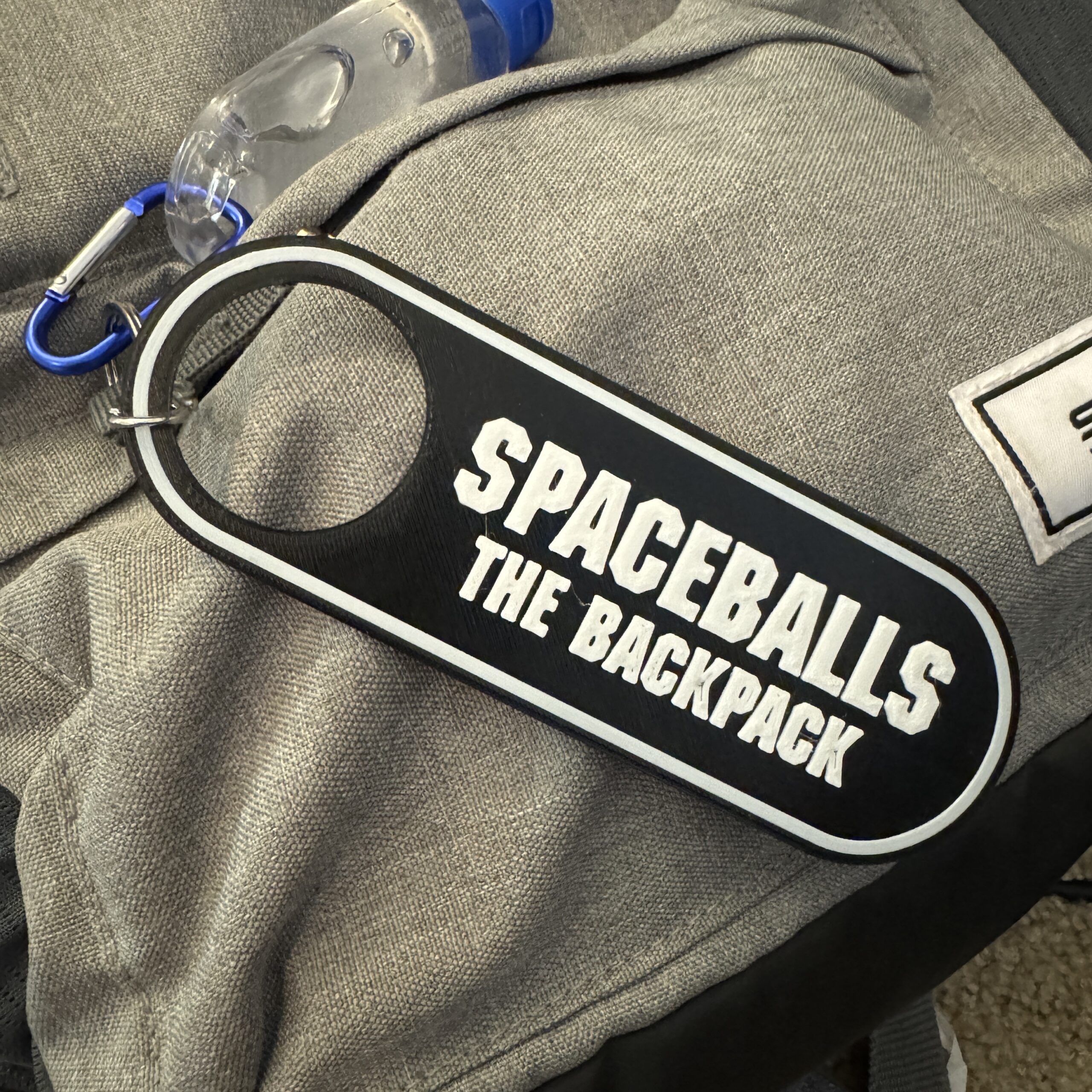The “Life Stack”, as inspired by Aaron Parecki, Jon Saddington, and others, is a presentation of tools, apps, services, and other things that I use in my daily life to manage the day-to-day. I try to keep this up-to-date as much as possible; the most recent updates were made in March 2025.
Computing
Apple MacBook Air (M3, 16 GB RAM, 512 GB Internal Storage)—I learned from my first experiences with lower-RAM Macs and Windows PCs that 16 GB RAM seems to be the “sweet spot” (the more, the better, but 16 at the minimum for MacOS or Windows 10/11), so I put down the extra money for the extra RAM. If I could afford it, I would double that to 32 GB for some of the more intensive Wolfram stuff that I like to do.
Apple Mac mini (M2 Pro, 16 GB RAM, 512 GB Internal Storage)—I still have it since I’m still paying it off (for a couple of more months, anyway), after which I’ll trade it in for something else. It was my main machine until I bought the MacBook Air. Right now it’s mostly a test bed server.
HP ZBook Firefly 15 G8 (Intel i7, 32 GB RAM, 512 GB SSD, Nvidia T-500 GPU, Windows 11 Enterprise)—this is my work machine provided by my employer, which I don’t have a choice over.
ViewSonic OMNI VX3418-2KPC Gaming Monitor (34 in., 21:9, 1440p, 1500R Curved, 120 Hz)—Having a single ultra wide screen is more productive for me than two separate 16-by-9 or 4-by-3 ones, and occupies less real estate in my workspace. Four connections—two HDMI, two DisplayPort.
Vivitar 10-in-1 Card Reader—Provides USB 2.0 and 3.0 ports. HDMI, 100-watt PD, and SD card reading to my MacBook Air.
Ediliow GaN III 280-watt USB-C Charger Block—one plug into the wall, eight devices get powered in my workspace, including my MacBook Air. Two 65-watt USB-C, three 30-watt USB-C, and three 20-watt USB-A ports. I have a smaller 160-watt, six-port one (no longer available on Amazon) that I keep in my bag.
KYY 15.6 in. Portable FHD Monitor—It doesn’t get a lot of use anymore, but it’s a good USB/Mini-HDMI full-HD, HDR screen to keep around for when it’s occasionally useful. It’ll accept a pass-thru power source, so if I hook up my Nintendo Switch to it a single plug can power both the monitor and the Switch.
Note-taking
Kindle Scribe (2024 model, 64 GB)—The stylus and screen on this thing write very nice; it’s insanely more comfortable than an Apple Pencil on the glass iPad screen (although I haven’t tried the new Pro’s textured screen, but I have used Paperlike in the past). I had a hard time deciding between the Scribe and reMarkable’s Pro tablet, but went with the Scribe because of the AI features and having access to my Kindle library on a single device.
LiveScribe Symphony Smartpen—If your note-taking requirements include having a paper backup, then I highly recommend LiveScribe, which is now the consumer subsidiary of Sweden’s Anoto Group. In a market that at one point included Logitech, Moleskine, and others, this is the brand that has survived, albeit on a significantly reduced ecosystem.
Rocketbook—Another note-taking “platform” that I recommend and sometimes use is the “recyclable” Rocketbook. Their notebooks have reusable pages that you write on with Pilot’s FriXion pens and highlighters—on regular paper rubbing the ink with the rubber end of the pen creates friction heat (> 65 °C / 149 °F) that turns the ink transparent, “erasing” it; with the Rocketbook the pages wipe clean with a spritz of water and a microfiber cloth included with the notebook. You can use the mobile app with the QR codes printed on the pages to take a clean snapshot that is OCR’d and converted to PDF, shared to note-taking apps, &c. (even has a way to title the file by writing it between “##” tags at the start and end of the handwritten title).
Take note: The FriXion pen ink turns opaque again when exposed to cold (-20 °C / -4 °F or lower). If you buy a Rocketbook, make sure it’s not the “Wave” kind that “erases” with a few seconds in a microwave; putting it in your freezer will make the ink reappear exposing what you had “erased”.
(Side note on the Pilot FriXion pens—I prefer the Extra Fine Point 0.5 mm that are typically only available online over the Fine Point 0.7 mm that they usually carry in the local shops, as they seem to write better; but then I tend to prefer extra-fine points on any pen more than fine or medium points.)
Mobile Gear
Apple iPhone Pro Max—Currently the 16; I take advantage of my carrier’s “anytime upgrade” to swap for the latest every year. Always the Max (because my long fingers need the real estate), always the largest capacity they have (currently 1 TB) because I shoot a lot of photos and 4K/60fps videos with it.
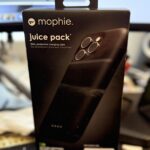
mophie juice pack—a battery case on my iPhone that provides some extra “juice” when the main battery runs low (which it hasn’t, yet). I bought it at the same time I started using Aaron Parecki’s Overland app for continuous location tracking just to be on the safe side (having the phone’s GPS turned on 24/7 can drain the battery a little faster than one might be used to). It also makes my iPhone much more comfortable to hold in my big hands.
Apple iPad Pro (M2, 11 in., 128 GB, 5G & Wi-Fi)—It still gets use; but with the MacBook Air now in my arsenal, it doesn’t get as much as it used to, and I’ll likely take it off of my mobile account once it’s paid off.
Apple Watch Ultra (1st gen, LTE & WiFi)—the first-generation because the second one had just been pulled off the market in response to a patent lawsuit. Battery life is admittedly lacking compared to other smartwatches on the market (I get roughly two days, usually less), but it has apps and such that I can install and actually use.
Garmin Etrex SE—Back when I used to do geocaching, the GPS receivers I had would barely last more than a few hours. This one lasts almost a week on a pair of “AA” batteries, and connects to Garmin’s mobile apps and my phone via Bluetooth. I use this as a backup for continuous location tracking.
Anker PowerCore Metro Essential 20000 PD Lithium Battery Pack with USB-A and USB-C inputs/outputs for charging devices that don’t already have a backup available (like the iPhone does with the juice pack). I’ve had this one for quite a while.
FuelRod—In a pinch when I don’t have the Anker battery with me, there are FuelRod kiosks all over the place in every theme park and almost every other major tourist attraction in central Florida. $30 for a full kit with cables and adapters, which provides roughly a full charge for one device, then a couple of bucks to swap a used one for fresh at a kiosk (and credits through their app to offset the swap cost). The kit is small enough to shove in a pocket and it’s been a lifesaver on more than one occasion.
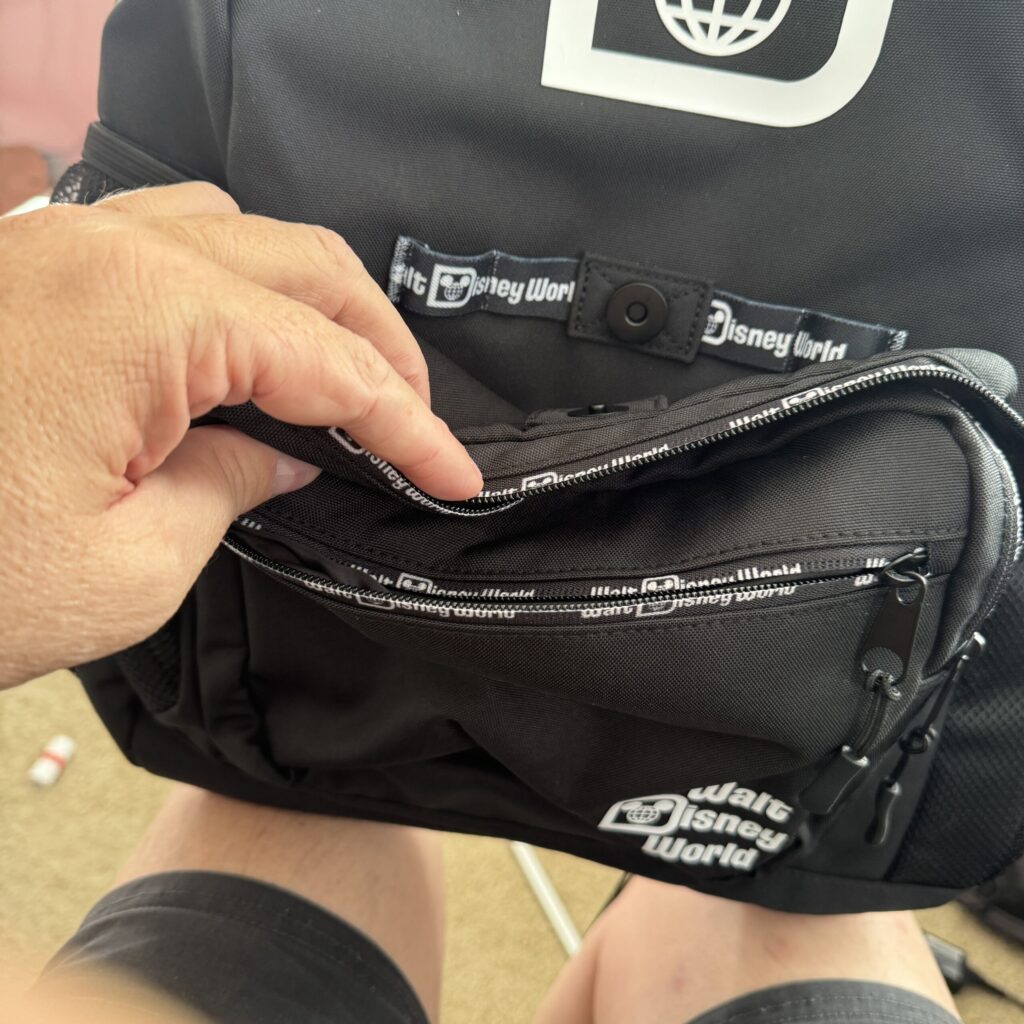
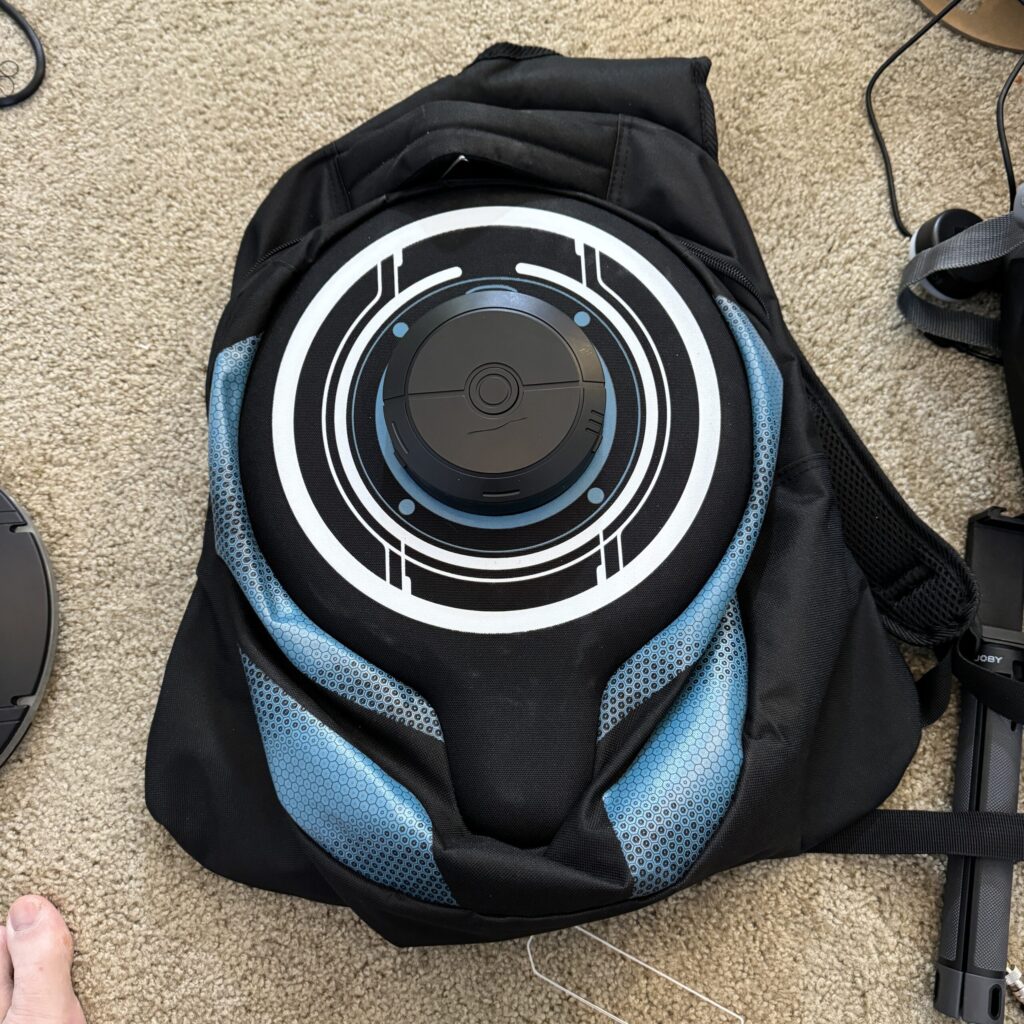
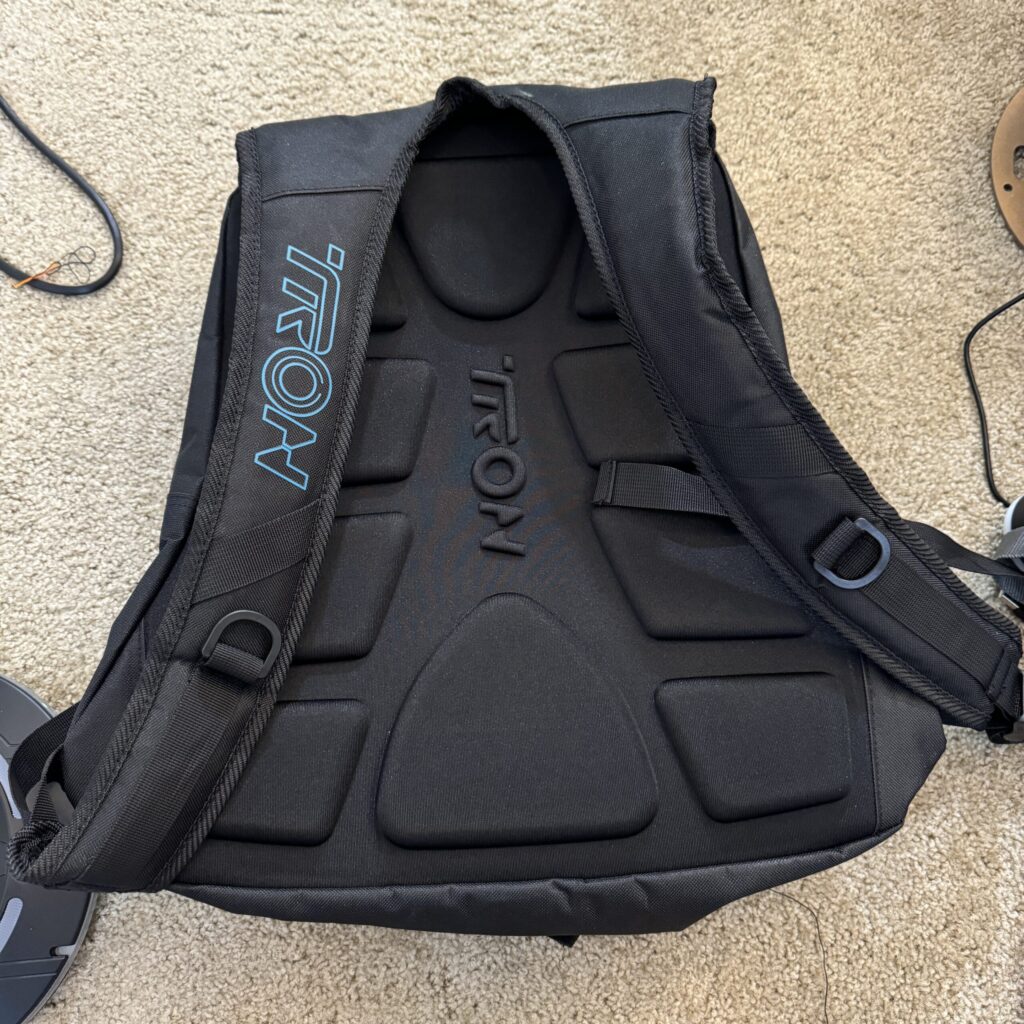
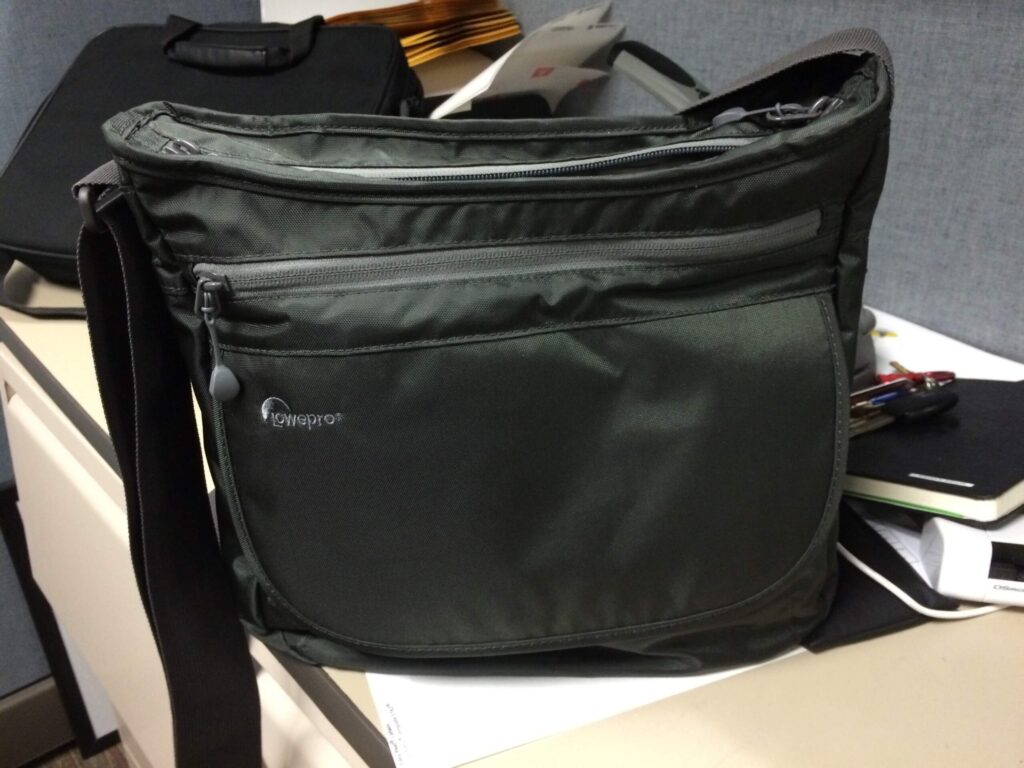
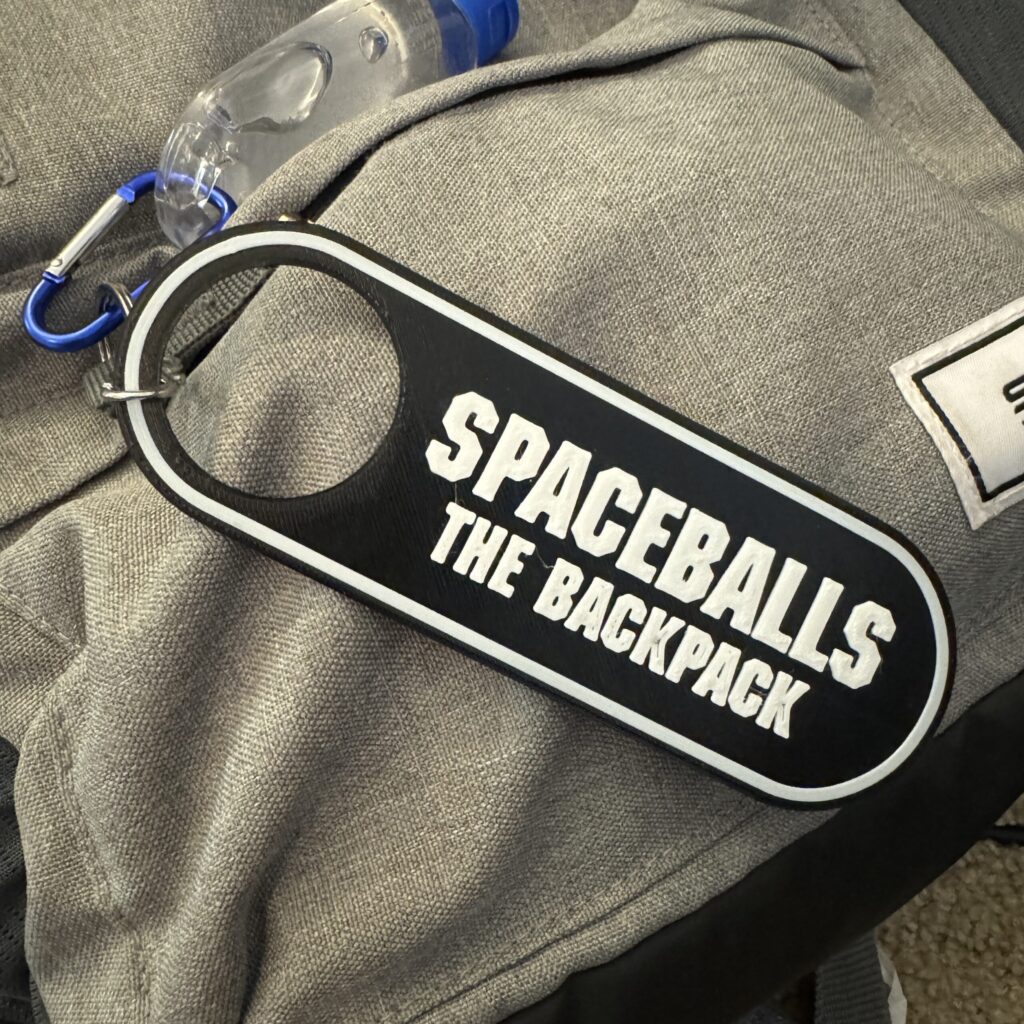
Carry Bags—I have several, and which one I use depends on need and whim. The one I use the most often is Solo’s RE:Cover Backpack, which is the perfect combination of size, comfort, and weight to take to the theme parks and elsewhere, and it fits either of my laptops. Among the others I have are a massive one from Swissgear, a Disney World pack that’s also fairly comfy and has a place to stow a Mickey-ear headband (I don’t have one), a lightweight one I bought at the Black Spire Outpost on Batuu, the Outdoor Products Quest Day Pack, an Ozark Trail Sunset Sling, a LowePro Streamline 250 (probably my oldest bag), a TRON-themed one from Disney World that has a place to hold an “identity disc” bluetooth speaker, and a couple of Outdoor Products fanny packs (this one and a model 1331 that I can’t seem to find online but it includes a water bottle holder).
A freaking water bottle! This is Florida (he shouts as if he were Leonidas drop kicking a gator into the bottomless cistern)! In the summer it is as humid as it is hot, and if you are not consuming water on a continuous basis you will die. When in the Universal parks the water bottle is substituted with one of their all-day-refillable cups (~$17 new including the day, bring it back for ~$11/day with AP, refill as often as every ten minutes from Coca-Cola Freestyle machines located throughout the parks).
Software
Finance: I’ve tried just about everything from envelope method (like YNAB) to plain-text accounting (ledger, hledger, beancount) and always keep coming back to Quicken (I actually loved Microsoft Money, but Microsoft decided to hand the market to Intuit, who owned Quicken at the time, on a silver platter and shut down MS Money; Quicken has since become an independent company). It just works across desktop, mobile, and web, and connects to my bank and billers to keep things up-to-date when I forget to.
Day-to-Day Productivity: The productivity apps built into MacOS and iOS (Pages, Numbers, Keynote, Calendar, Reminders, Notes) serve me just fine; but Google’s web-based apps (Docs, Sheets, Slides) are much easier to automate with Google Apps Script (GAS), and GAS I can use to create webhooks and other automations that help gather my personal informatics.
Notes & Database: Obsidian has become my note archive of choice for the moment, as it works with plain ol’ Markdown and provides some minimal database features using YAML and JavaScript Dataview, plus a community library of plug-ins for all kinds of things.
Database: I have fallen in love with Apache CouchDB. It is a document-based NoSQL database similar to MongoDB but utilizes much simpler regular JSON over HTTP. For APIs that send JSON-content webhooks, I simply let those APIs send directly to CouchDB.
Personal Informatics, Visualization, and (almost) everything else: Spending the $26 a month for Wolfram Mathematica (even though I am not a mathematician) has been worth every penny (and, really, you don’t even need the subscription—the free Wolfram Engine does it all as well, just without the graphical front-end; you could always use VS Code or Jupyter as the front-end to it instead). It is far more than just another powerful mathematics platform like MATHLAB or the open-source GNU Octave; it also comes with a vast library of real-time, current, and historical semantic data, objects, resource functions, and I can’t begin to name what else, from nearly every scientific and academic discipline, that can be incorporated into your everyday development, and it is designed to develop just about any application, API, or cloud function. And the kicker: The current 14.2 is (almost fully) backwards compatible with notebooks created nearly forty years ago in 1986’s version 1.0. The subscription also includes services like Wolfram Cloud and Wolfram Data Drop.
I also use Aaron Parecki’s Overland app to track my whereabouts via GPS 24/7. Some of the features of my blog are driven by data from Overland and the Wolfram platform.
Online Services/Apps
Social Apps: Facebook (only because that’s where most of my friends and family are), Bluesky, Instagram.
Dreamhost hosts this WordPress-based web site on a shared-access server.
Bouncie tracks my vehicle use with an OBD device that also utilizes GPS to log my driving trips and let me know where I parked (especially useful in Disney World’s parking lots, because my car has no alarm I can panic-mode to show me).
Foursquare Swarm logs my location visits and check-ins for personal informatics and social use. Swarm was originally Foursquare until the latter decided to separate its location information services (which kept the Foursquare name) and its check-in app (which became Swarm). Foursquare has since shut down its information service and is putting its full development weight behind Swarm.
Apple One as the “gateway” to all of Apple’s online services such as iCloud Drive, Hide My Email, Music, TV, Fitness+, News+, Arcade, &c. I found it was cheaper to just subscribe to the whole package than subscribe separately to the few pieces I actually use (Drive, Music, Arcade and iCloud+).
Google Apps Script handles a lot of my automations and personal webhooks as well as doing a little bit of transmogrifying for “next destinations” (for example, taking a pure JSON input from one place and making it a field value for a form-based input to Wolfram Cloud as APIs I create there only accept form input).
Nvidia GeForce Now to play most of the games that I bought when I had gaming PCs or laptops.
The Boneyard
A listing of things and services that I’ve used in the past, and since let go of for one reason or another.
Microsoft 365—Switched (back) to Apple.
Android—Switched (back) to Apple. Nothing wrong with Android; use what works best for you.
Various gaming laptops/tower rigs—Switched to Apple and/or simply don’t play much anymore.
Twitter/X—While I still have an account, I have mostly stopped using it since Musk took over and started charging a minimum $100/month to use the API. (Not because of Musk, but because of the expense.) I switched over to Bluesky, which has no such barrier to entry. I stopped using Twitter entirely in March 2025.
TikTok—I tried it again recently, and got bombarded with so many “out of left field” conspiracies and demonstrably false information that I shut down the account (again). I would endorse its ban just for the sake of my brain.
Mastodon.social—they banned me from the server for posting something someone apparently didn’t like (I still don’t know to this day exactly what it was), and then never responded to my appeal, so I let it go. Some battles are simply not worth fighting.
Microsoft Windows—except where I don’t have a choice (like my work laptop, which my employer provides). I use either Apple or Linux nowadays.
Chromebooks—Cheap, decent laptops for the price; but outside of Google and a wi-fi connection they’re not very useful to me.
Threads—Redundant with the other social apps I use, especially once it’s fully on the Fediverse.

